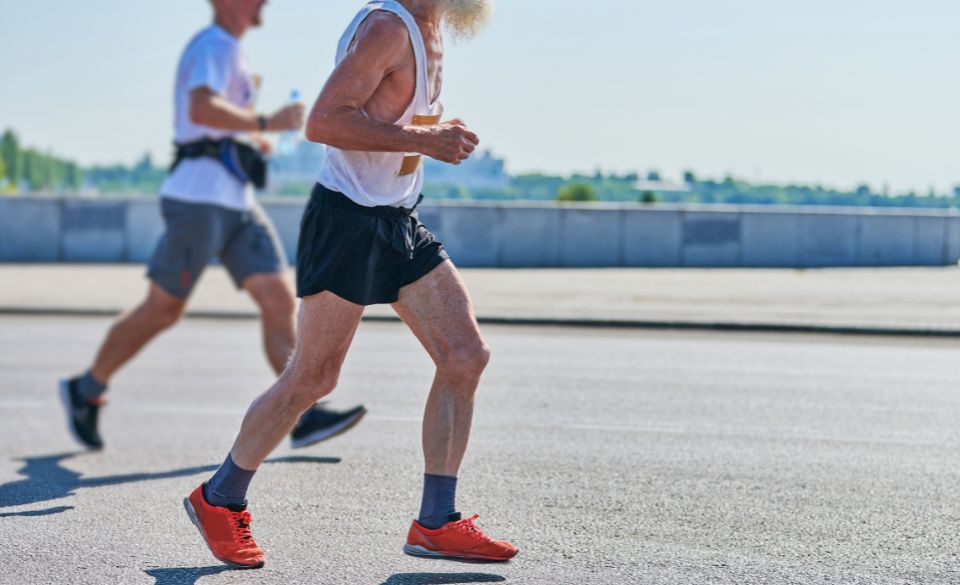
Where Do Runners Chafe? A Complete Guide
What Is Chafing
Chafing can be an uncomfortable yet common experience for many. According to the American Academy of Dermatology, chafing usually occurs when skin rubs against skin, or fabric rubs against skin, resulting in simple to severe skin irritation. Sometimes chafing is caused by rigorous activity or exercise, while other times it is simply caused by wearing clothing or jewelry that rubs against the skin in certain areas of the body.
Chafing is easily identifiable by a red rash or small bumps on the skin, along with skin tenderness and a burning sensation. Areas that are prone to chafing include the inner thighs, groin, underarms, nipples, and arms, not to mention the highly sensitive skin around the waist and begin straps or sports bras.
In order to prevent chafing, there are a few simple measures that can be taken. Wear loose-fitting, moisture-wicking clothing when participating in any activity or exercise that produces perspiration. Synthetic fabrics and tight clothing can trap sweat and create friction, which increases the risk of chafing. Also, keep skin dry since sweat and humidity can contribute to increased skin friction and chafing.
To help prevent chafing, dermatologists suggest using petroleum jelly or powder on the skin to protect it from excess and add a protective barrier between skin and clothing. You may also want to consider wearing clothing that has flat seams and no elastic bands to reduce rubbing and cause less irritation.
Where Do Runners Chafe
Running is a popular form of exercise for people of all ages and fitness levels, but it can often be uncomfortable. One of the most frustrating problems that runners face is chafing. Chafing is the irritation and inflammation caused by skin rubbing against skin or clothing, and it can be incredibly painful if you don’t take steps to prevent or treat it.
Most chafing occurs in the same places on the body, such as the inner thighs, nipples and underarms. When you run, your body produces sweat, and sometimes the sweat can get trapped between your skin and clothing, causing irritation. The friction caused by moving your body can also cause your skin to become red, sore and even raised.
There are several ways to prevent chafing when running. Wear lightweight, synthetic fabrics such as polyester that are designed to wick away moisture. Also, try to avoid clothing with seams, as these can cause further irritation. If you’re running in colder weather, wear a thin layer of Vaseline, lanolin or lard underneath your clothes to create a barrier between you and your clothing. Additionally, you can apply an anti-chafing balm such as Body Glide on any trouble spots before your run.
If chafing does occur, there are several treatments that can help soothe the skin. Cool compresses will reduce inflammation, while coconut oil or aloe vera can act as moisture barriers on the skin to help it heal. It’s also important to allow chafed skin to rest and air-dry, instead of using tight clothing or bandages, which can further irritate the area.
Chafing is a common issue among runners, but with the right clothing and preventative measures, it can be easily avoided. Taking the right precautions and knowing the best treatments will ensure that you stay comfortable and can keep running without any extra irritation.
Clothing That Prevents Chafing
First, choose lightweight and moisture-wicking materials like nylon or polyester. Make sure to avoid heavy fabrics like cotton or wool that can lead to excessive sweating and stick to your skin, causing chafing.
Look for special “anti-chafing” fabrics like spandex, which have an added layer of fine mesh or a specialized coating that significantly reduces friction and help prevent skin irritation. This can be a great option for runners who tend to experience more chafing than average.
When looking for clothing to prevent chafing, pay attention to the seams and stitching. Look for flat seams that are sewn close to the body. These prevent irritation and stop bunching and chafing, keeping the fabric flat and moving with you.
Try trousers or shorts with a wide, elastic waistband, as this will help to keep fabrics in place, reduce chafing, and provide extra support. Similarly, full-length or three-quarter running and cycling leggings can also reduce friction, absorb sweat, and create a smooth and comfortable fit.
Finally, don’t forget to use skin-friendly chafing creams on vulnerable areas of your skin like the inner thighs, arms, and torso. Applying a thin layer of cream before you put on your clothes can act as a protective layer and keep the skin lubricated so it doesn’t rub against clothing.
Overall, the best way to prevent chafing is to choose the right type of clothing. Look for moisture-wicking fabrics, flat stitching, and elastic waistbands for maximum comfort and to keep any chafing at bay.


